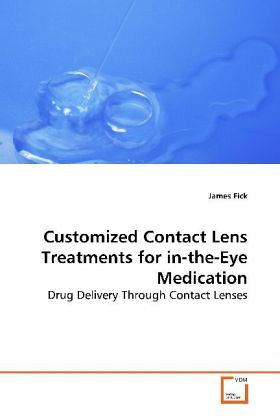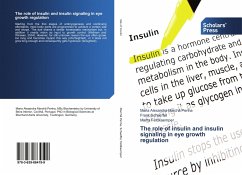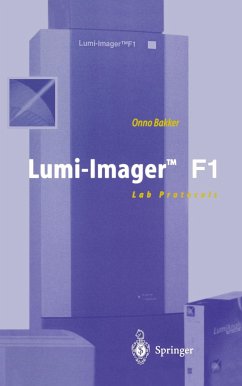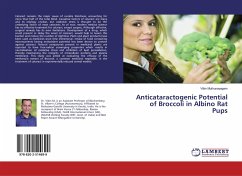
Customized Contact Lens Treatments for in-the-Eye Medication
Drug Delivery Through Contact Lenses
Versandkostenfrei!
Versandfertig in 6-10 Tagen
45,99 €
inkl. MwSt.

PAYBACK Punkte
23 °P sammeln!
Hydrophilic polymer (polymacon, alphafilcon-A) andsilicone-based (balafilcon-A) hydrogel contactlenses, before and after surface modification byradio-frequency glow-discharge treatment (RFGDT),were used to monitor methylene blue/silver nitratedrug-surrogate uptake and elution. Infraredspectroscopy revealed modified absorption peaks,accordingly. Energy-dispersive x-ray (EDX) analysisand inductively coupled argon plasma atomic emissionspectroscopy (ICP) confirmed silver lens depotconcentrations and were employed to measured eluateconcentrations, while visible spectrophotometry andICP spectrometr...
Hydrophilic polymer (polymacon, alphafilcon-A) and
silicone-based (balafilcon-A) hydrogel contact
lenses, before and after surface modification by
radio-frequency glow-discharge treatment (RFGDT),
were used to monitor methylene blue/silver nitrate
drug-surrogate uptake and elution. Infrared
spectroscopy revealed modified absorption peaks,
accordingly. Energy-dispersive x-ray (EDX) analysis
and inductively coupled argon plasma atomic emission
spectroscopy (ICP) confirmed silver lens depot
concentrations and were employed to measured eluate
concentrations, while visible spectrophotometry and
ICP spectrometry monitored methylene blue and silver
elution rates in static versus simulated eye-blinking
conditions. The conclusions reached are that (1)
initial drug uptake of surface modified lenses
increased in this order: polymacon alphafilcon-A
balafilcon-A lenses; (2) drug release rates of the
polymacon, and alphafilcon-A remained unaffected by
the RFGDT; (3) increased release rates occurred from
the RFGDT-surface-modified balafilcon-A lenses; and
(4) dynamic forces increased the release rates for
all contact lenses.
silicone-based (balafilcon-A) hydrogel contact
lenses, before and after surface modification by
radio-frequency glow-discharge treatment (RFGDT),
were used to monitor methylene blue/silver nitrate
drug-surrogate uptake and elution. Infrared
spectroscopy revealed modified absorption peaks,
accordingly. Energy-dispersive x-ray (EDX) analysis
and inductively coupled argon plasma atomic emission
spectroscopy (ICP) confirmed silver lens depot
concentrations and were employed to measured eluate
concentrations, while visible spectrophotometry and
ICP spectrometry monitored methylene blue and silver
elution rates in static versus simulated eye-blinking
conditions. The conclusions reached are that (1)
initial drug uptake of surface modified lenses
increased in this order: polymacon alphafilcon-A
balafilcon-A lenses; (2) drug release rates of the
polymacon, and alphafilcon-A remained unaffected by
the RFGDT; (3) increased release rates occurred from
the RFGDT-surface-modified balafilcon-A lenses; and
(4) dynamic forces increased the release rates for
all contact lenses.












